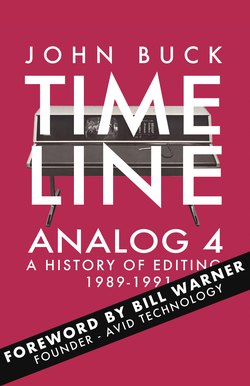Читать книгу Timeline Analog 4 - John Buck - Страница 14
На сайте Литреса книга снята с продажи.
PENCIL TEST
ОглавлениеGalyn Susman grew up in Chicago and wanted to be a physicist or an astronaut. She told Emma Silvers in The Jewish News:
And then I went to Brown (University) as a physics major and found that I actually wasn’t very good at physics. So I chose something it turned out I was good at: computer science, computer graphics. Computer science really spoke to me and meshed with my way of thinking. I loved that way of looking at the world.
She joined Apple in 1986 where she worked on the development of the Apple ColorPicker for the Macintosh II and when that completed, Susman joined her Advanced Technology Group colleagues to make a grander plan::
In the fall of 1987 Apple's ATG decided that it was time to create a production quality animation for SIGGRAPH. The goal was to produce a piece of 3D character animation with high quality rendering. The challenge was to create this piece entirely on Apple computers, specifically on the Macintosh II
VP ATG Larry Tesler backgrounds the decision:
We wanted people to know the Macintosh was becoming a better and better machine for doing animation applications.
The ATG team also wanted to better understand what problems creative professionals may encounter with such a project and counter them with upcoming applications. In response Susman, Andrew Stanton and Nancy Tague created an animated movie called Pencil Test, a light hearted story where a pencil icon from a Macintosh drawing program came to life. In a prescient move, the team adopted an open approach to the challenge rather than build an integrated system.
While the latter would have given ATG greater control, Susman argued that the:
Open module systems offer one of the main advantages of Macintosh: integration. With the Macintosh consistency of user interface, different modules from different publishers have the familiar user interface. The best drawing program can be used with the best animation program while using the best video card.
The open versus integrated approach was one that was to repeat itself across the development of desktop video. A key element of their work was to use off-the-shelf programs like Super3D from Silicon Beach Software while the 3D models were animated using MacTwixt, a Macintosh version of the public-domain animation package Twixt, developed at the University of Ohio by Dr. Julian Gomez.
News of the group's work soon spread across Apple and other teams contributed expertise and equipment. Research scientists Steve Perlman, Carl Stone, Victor Tso, Dave Wilson, John Worthington, Larry Yaeger and Jay Fenton added to the project.
Bruce Leak from the Color QuickDraw team assisted in trialling WYSIWYG animation lighting and coloring. He shared with Hansen Hsu at The Computer History Museum:
Pencil Test was a big effort out of the Advanced Tech Group. We in system software were always behind. So I wondered how the research team could afford to have 20 people making an animated video. How could that be important?
After the timeline of scenes had been animated, Susman and the team discovered that Pencil Test would take 96 days to render and output to an external source if they used a single Mac. Ken Turkowski and the growing team hacked together a distributed rendering program that linked 28 Macintosh IIs together via Ethertalk to output to an imagesetter frame by frame, with each frame taking an average of 30 minutes to render.
Engineer Al Kossow recalls:
We grabbed Macs from other groups, from our own group and we brought in machines from home.We took them into the Graphics Lab and stacked them three high. Bruce Leak adds:
It certainly showed how complicated and how hard this was. They couldn’t even always render an entire frame, they had to render pieces and assemble them on a file server….[then] they had to load 100 frames at a time onto a digital video storage machine and output that to videotape.
Apple Fellow Al Alcorn told the Computer History Museum's Henry Lowood:
"...the fun was we were going to do the rendering as a desk accessory in the background at night on all these computers and the Internet, the network had just come out in engineering. Under Steve Jobs, there was no network. Now we actually had an Ethernet network emerging in the lab, and so everybody could put this program called NetSlave that would do the rendering at night. But [after] all this work, [we] realized that, wait a second, the Mac operating system is a terrible platform for video, for media, just terrible, terrible."
Mark Lentezner and John Worthington designed, created and added audio but during this phase there were problems synchronizing sound and video. A small team called 'The Time Lords' spun off to solve the issue. Al Alcorn continues:
And so, a group was formed called "The Time Lords" in engineering. It was basically an interest group that would meet every week and talk about "what do we do to fix the operating system of the Mac to allow for media to get in there?"
That evolved into, that infected product development, and that became QuickTime.
